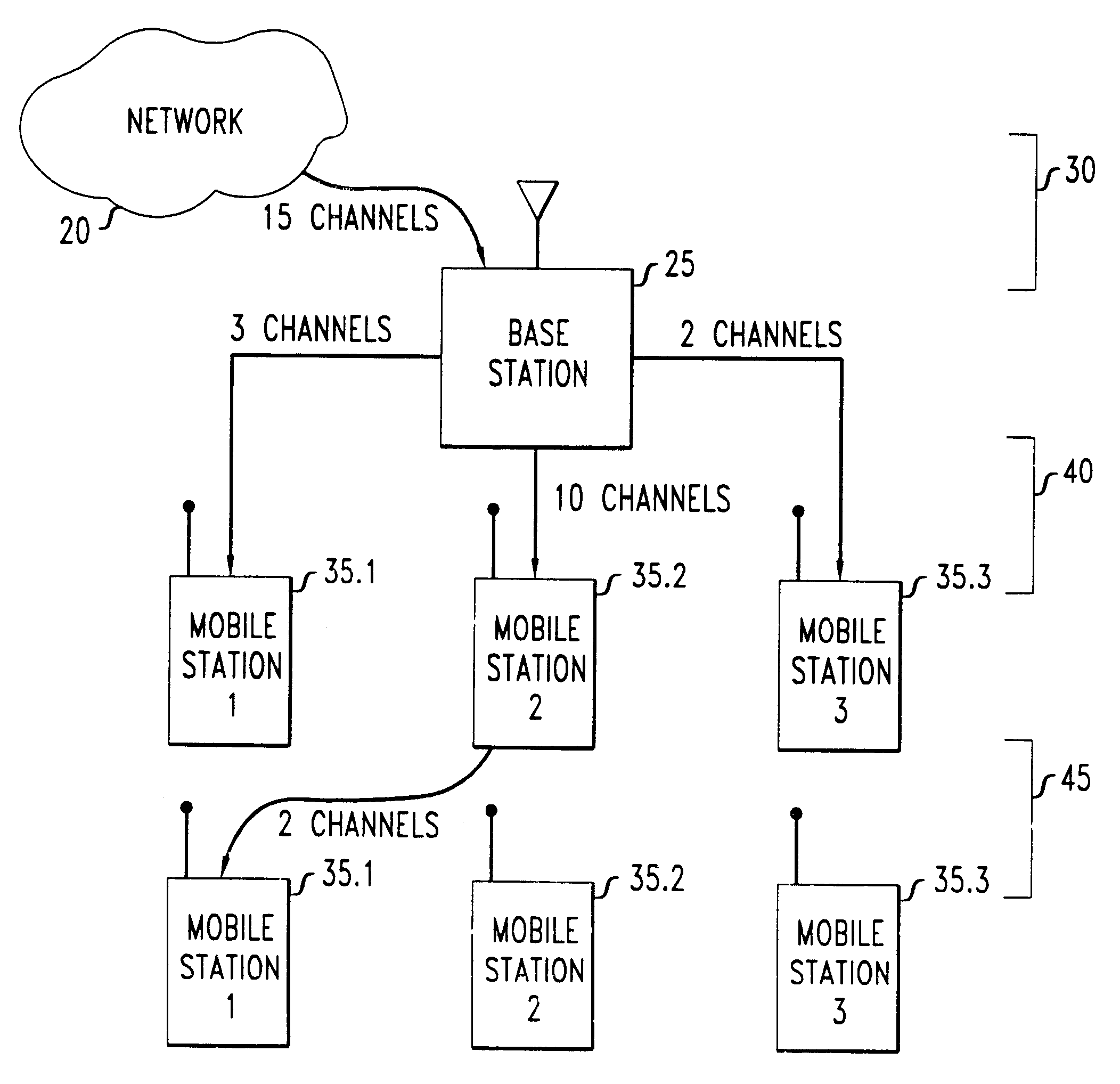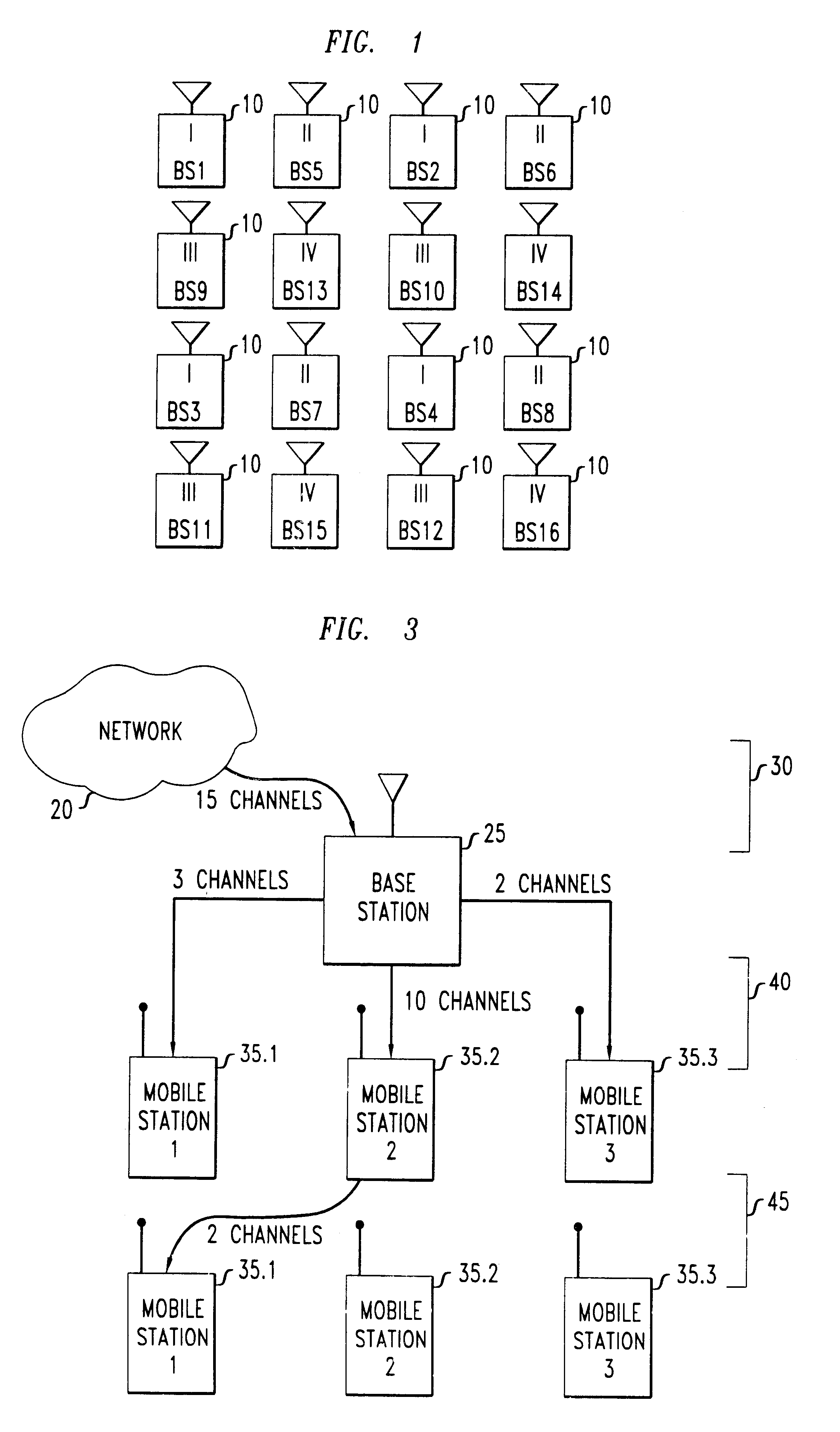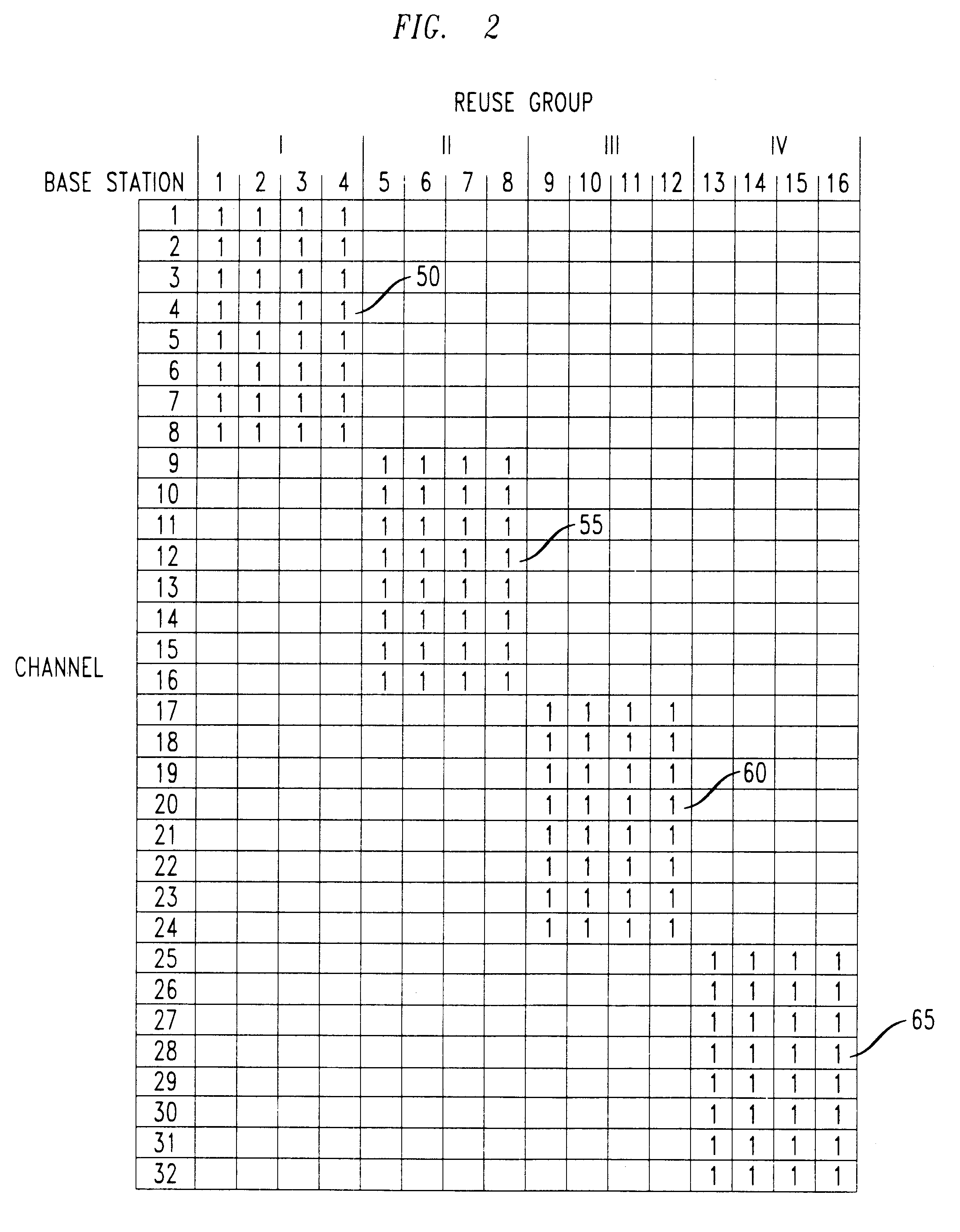Method for dynamically allocating carriers in a wireless packet network, with reuse of carriers
a wireless packet network and carrier technology, applied in the field of packetized wireless communication networks, can solve the problems of a large trade-off between delay and efficiency of channel usage, relatively long delays, and more severe trade-offs
- Summary
- Abstract
- Description
- Claims
- Application Information
AI Technical Summary
Problems solved by technology
Method used
Image
Examples
Embodiment Construction
FIG. 12 is a graph of mean delay versus the number of mobile stations per base station, for carrier requesting (curve A), carrier raking (curve B), the LP-based approach (curve C), and fixed channel allocation (FCA) (curve D). FIG. 13 is a graph of the 95.sup.th percentile delay versus the number of mobile stations per base station, for carrier requesting (curve A), carrier raking (curve B), the LP-based approach (curve C), and fixed channel allocation (FCA) (curve D). These graphs are the results of numerical simulations that we have performed.
In the graph of FIG. 13, 95% of all packets have delay less than the amount plotted, at each given number of mobile stations per base station.
FCA is a planned scheme in which each base station receives a predetermined allocation of channels. These are chosen to keep interference at an acceptable level regardless of which channels are actually being used. Referring to FIG. 1, an illustrative FCA scheme might assign channels 1-8 to base station...
PUM
 Login to View More
Login to View More Abstract
Description
Claims
Application Information
 Login to View More
Login to View More - R&D
- Intellectual Property
- Life Sciences
- Materials
- Tech Scout
- Unparalleled Data Quality
- Higher Quality Content
- 60% Fewer Hallucinations
Browse by: Latest US Patents, China's latest patents, Technical Efficacy Thesaurus, Application Domain, Technology Topic, Popular Technical Reports.
© 2025 PatSnap. All rights reserved.Legal|Privacy policy|Modern Slavery Act Transparency Statement|Sitemap|About US| Contact US: help@patsnap.com



